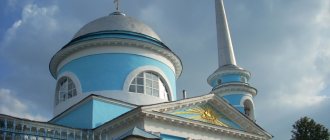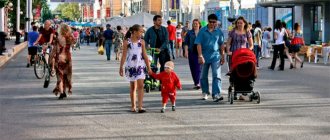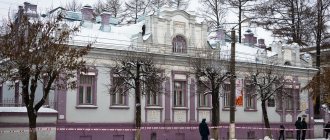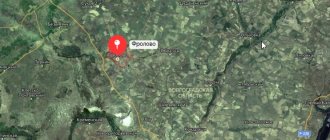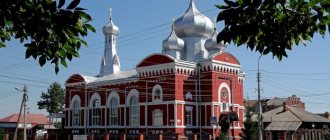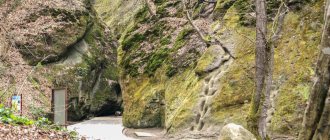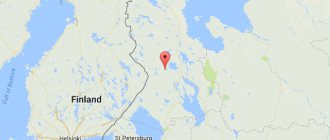Kursk region is located in the southwestern part of the Central Federal District. If you look at a map of the Kursk region from a satellite, you can see that its western borders border with Ukraine. In terms of area, this region is one of the smallest in Russia - only 29 thousand km2. It is an agricultural area with a large amount of arable land.
A map of the Kursk region by region allows us to see that the region is surrounded by the borders of several regions:
- Lipetskaya;
- Voronezh;
- Orlovskaya;
- Bryansk;
- Belgorodskaya.
The hydrography of the region belongs entirely to the Dnieper basin, although the region is not distinguished by significant water resources. Looking at the areas on the map of the Kursk region, you can find only a few rivers longer than 100 km. These are water arteries such as:
- Svala;
- Psel;
- Sejm;
- Tuskar.
Also in the region there are about 870 small lakes and 780 artificial hydrographic structures - ponds and reservoirs.
Using maps of the Kursk region with diagrams, you can find all the cities and towns in the region, and by zooming in, you can see streets and houses, administrative buildings and stations, roads and natural objects in each settlement.
Geography of the Kursk region
Geographically, the region is located in the southwest of the Central Russian Upland, between 50°54´ and 52°26´ northern latitude. It covers an area of 29.8 thousand square kilometers. From north to south it extends for 171 km, and from west to east – for 305 km.
The region has a temperate continental climate, with warm summers and relatively mild winters. Cloudy weather prevails throughout the year, occupying 60% of all days, and clear weather accounts for only 20%. Annual precipitation is 500–600 mm per year.
Solntsevsky and Sudzhansky
In the Solntsevo district, the center is the town of Solntsevo, the total number of residents of the municipal unit is 13,733. In the village of Orlyanka there is a church built in 1794.
In Sudzhansky (26,773 people), the center is the city of Sudzha. There are many industrial enterprises and 2 chalk developments. In the village of Gusevo there is the estate of P.D. Dolgorukov, and in the village of Gornal there is a large settlement.
Administrative division and economy of the Kursk region
There are 28 districts and 480 village councils in the region. Within the Kursk region there are 2,775 rural settlements and 32 urban settlements. There are five urban districts and 28 municipalities.
The economy of the Kursk region is dominated by agriculture and ore mining. Kursk NPP is operational. 72% of the region's lands are cultivated. Growing of grain, fodder and industrial crops predominates. They raise cattle, poultry and pigs.
Both road and rail transport are developed in the Kursk region. The latter is largely tied to the territory of Ukraine.
Glushkovsky and Gorshechensky
The territory of Glushkovsky shares borders with Ukraine and is home to 19,503 people. There is a distillery, sugar and bread factories here. At the Glushkovo station there is an asphalt production plant, but the main economic component of the area is agriculture. The administrative center is the town of Glushkovo.
Next on the list of districts of the Kursk region is Gorshechensky, occupying 4.7% of the entire territory of the region. The center is the village of Gorshechnoye. A little over 16 thousand people live in the area. It is on this territorial unit that the Barkalovka conservation area is located in the upper reaches of the Apochka River.
Population of the Kursk region - general information
The Kursk region is one of the most populated in Russia. In 2017-2018, the population of the Kursk region was 1 million 116,000 people. The average population density was 37 people/m2. The share of the urban population is 68%.
The ethnic composition of the residents of the Kursk region is quite homogeneous. Over 90 percent of the population are Russians. There are much fewer Ukrainians in the region – only 1–2%. Armenians are in third place. Representatives of other nationalities are present in very small numbers.
The population dynamics of the Kursk region is quite negative. There was a steady increase in population until 1930, but then there was a rapid decline in the number of inhabitants, which continued until approximately 1960. At its maximum, the number was up to 3,000,000 people. By 1960 there were already only 1,500,000 people, that is, 2 times less than in 1930. After 1960, the population declined at a slow pace and not constantly. Thus, in recent years there has been no pronounced demographic dynamics in the region.
In 2003, the number of deceased residents was more than 2.2 times greater than the number of births. In 2010, this gap decreased significantly and amounted to a value close to 1.6.
Dmitrievsky and Zheleznogorsky
Dmitrievsky has 14,854 inhabitants (the center is the city of Dmitriev), which is home to about 44.56% of the total population.
15,890 people live in Zheleznogorsk, but only 10.52% live in urban areas, in the center, the working village of Magnitny. By the way, the city of Zheleznogorsk is the administrative center, but is not part of the district.
History of the region's population
Favorable climatic conditions and proximity to trade routes contributed to the settlement of the Kursk region. Initially, northerners lived here. Important trade routes passed through their lands.
Until the end of the 16th century, most residents led a nomadic lifestyle and moved frequently. In the next 2 centuries, the settlement of the region was facilitated by the transition to agriculture. In addition to immigrants from primordially Russian territories, Lithuanians began to actively move into the Kursk region. There were many Ukrainians in the south.
Among the Russian population of the Kursk region there were many representatives of southern Russian groups. Western and Central Russian nationalities were also common, but their share was smaller.
Kursk
The Kursk district of the Kursk region is the largest, with a population of 57,692 people. In the area on the right bank of the Rat River there is an ancient Slavic settlement dating back to the 9th-14th centuries.
The head of the administration of the Kursk district of the Kursk region today is V.M. Ryzhikov.
The structure includes 17 village councils of the Kursk district of the Kursk region.
Age structure of the population
The average age of a resident of the Kursk region is 41.3 years. Compared to the previous census, it has increased by 1.3 years. This is due to the increase in life expectancy of the population. This value is close to the average for the population of the Central Federal District, where it is 40.9 years, and for Russia as a whole - 39 years. The decline in the birth rate is also the reason for the increase in the average age of residents.
The number of young residents of the region is steadily declining. In 2002, their share was 17.14%, and in 2010 – 14.78%. The picture is similar in the country as a whole - a decrease from 18.14 to 16.19 percentage share, and in the Central Federal District - from 15.33 to 13.85.
At the same time, the share of elderly people, on the contrary, increased – from 24.82 to 25.54 percent.
Ponyrovsky and Pristensky, Rylsky and Sovetsky
Almost 11 thousand people live in Ponyrovsky, the center is the town of Ponyri.
Pristensky has a population of 15.5 thousand inhabitants, the center is the town of Pristen. In the village of Kirovsky there is a museum “Command Post of the Voronezh Front”.
The Rila municipality has a population of 31,609. The center is the city of Rylsk. In the center of the village of Kapystich there is a settlement, excavations of which revealed that the settlement was founded back in the 9th and 11th centuries.
17 thousand people live in the Sovetsky district, the center is the town of Pshensky.
Sex structure of the population
In the Kursk region, the same situation with the ratio of men and women is observed as in the country as a whole. Thus, the share of women was 54.7 percent, and the share of men was 45.3 percent.
The proportion of married men is greater than the proportion of married women. For every thousand males (16 years of age and older) in the region there were 659 married people, and for every thousand women of the same age there were 528 married people. This is largely due to the larger proportion of women in the population. After all, there are 105.5 thousand more of them in the region than men.
Some residents are in so-called unregistered marriages. There are 71 such people per thousand men, and 57 per thousand women. 225 men and 143 women (per thousand people) consider themselves bachelors (celibate).
The number of divorced men is 63 per thousand and another 13 separated. For women, these figures are 91 and 13 people, respectively.
The largest proportion of men was noted in the Kursk region - 47.3 percent. And the largest proportion of women (54.8 percent) is in the Glushkovsky and Sudzhansky districts.
Kastorinsky and Konyshevsky
More than 15 thousand people live in Kastorinsky, the center is the working village of Kastornoye. On the territory there are sugar and dairy factories, railway enterprises. There is a lot to see in the area, there are 16 burial mounds, the 18th-century Church of the Assumption of the Blessed Virgin Mary and holy springs.
In the Konyshevsky district of the Kursk region, the administrative center is the town of Konyshevka. There are few residents in the area - 8,744, and the administrative center accounts for almost 40%. In the area there are two churches of the 19th century, protected by law, and the monastery of Our Lady of the Sign.
Historical reference
Kursk is an ancient Russian city. The results of archaeological excavations in recent years give reason to believe that the Kursk fortress was founded during the reign of Vladimir Svyatoslavich in approximately 982 - 984. and it was located in the area of modern Red Square of the city. The official beginning of the chronology of the history of Kursk is considered to be 1032. This date was established by historians by studying the oldest monument of church writing, “The Life of Theodosius of Pechersk,” created by the chronicler monk Nestor in the 11th century. The glory of the “Kuryans - experienced warriors” is also brought to us by the historical and literary document of the 12th century - “The Tale of Igor’s Campaign”. The Kursk fortress was a serious obstacle to the troops of Khan Batu, and in 1238 they burned it.
In the middle of the 14th century, the Kursk lands came under the rule of the then powerful Lithuania. Since 1508, the Principality of Kursk became part of the Russian state, gathered around Moscow.
In 1708, when Russia was divided into 8 provinces, the Kursk region became part of the Kyiv province. In 1719, the Kiev province was divided into 4 provinces: Kyiv, Belgorod, Sevsk and Oryol. The territory of the modern Kursk region was divided between the Belgorod and Sevsk provinces.
In 1727, the Belgorod governorship was created as part of the Belgorod, Sevsk and Oryol provinces. In 1749 it was transformed into the Belgorod province. In 1779, the Kursk governorship was formed, consisting of 15 counties. In 1797, the Kursk governorate was transformed into the Kursk province, which existed until 1928. In 1928, the transition to regional, district and district administrative divisions took place. On June 13, 1934, the Central Black Earth region was divided into two regions: Voronezh and Kursk. This date is considered the day of formation of the Kursk region.
The modern territory of the region belongs to the oldest Russian lands. The first settlements here are mentioned in the 11th century, and almost only in connection with the campaigns of Rus' against the Polovtsians and the Polovtsians against Rus'. Kursk is especially mentioned in this regard in the Tale of Igor's Campaign. In the 12th century, the appanage principalities of Kursk and Rylsk appeared. Then the Tatars came. The Kursk prince took part in the Battle of Kalka in 1223 and managed to escape, but during Batu’s campaign in 1239, Kursk was destroyed.
In 1355, the lands of the modern Kursk region, with Kursk and Rylsk, went to Lithuania, under the reign of Prince Gediminas there, and later, together with the Grand Duchy of Lithuania, to Poland. Rylsk in the middle of the 15th century was granted to Ivan Shemyachich, the son of Dmitry Shemyaka, who went over to the side of Lithuania, and already his son Vasily went over to the side of Moscow along with Rylsk and until 1523 remained the last appanage Russian prince. After his death, the Rila principality completely became part of the Moscow state.
Kursk was also located there in 1508. As a result, the Kursk lands ended up in the very south of the state and were supposed to protect it from the attacks of the Crimean Tatars. Fortified lines (cut lines) were built, to protect which guards were sent to the steppe, and fortresses. There were as many as three watchmen in Rylsk (from where the watchmen were sent), and a fortress was built in Kursk in 1591. Then intensive settlement of the region begins. Under Peter the Great's administrative reform, most of the region, including Kursk, became part of the Kyiv, later Belgorod, province, and in 1797 Kursk became a provincial city. By that time, the Kursk lands had long been no longer protected by any borders, and Kursk had a reputation as a deep province.
In 1928, the Kursk province entered the Central Black Earth Region; in 1934, the Kursk Region was formed (including Orel, Yelets, Belgorod). Modern borders were formed in 1954 with the formation of the Belgorod and Lipetsk regions. Since 1991, the region began to extend to the state border of Russia (Sumy region of Ukraine).
Up ▲ — Reader reviews (3) — Write a review ▼ — Print version
| e-mail, city: St. Petersburg | |
The article contains a number of inaccuracies. Kursk was never part of the Smolensk and Suzdal principalities. In the XIV-XVI centuries. Kursk did not exist, so it could not be considered any “important defensive point of the Moscow state” at that time. The construction of the Kursk fortress dates back to 1596, and not to 1597. In 1727, the Belgorod province was formed, not the governorship; there was no “transformation” of the Belgorod province in 1749. Governorship and province are synonymous; there was no “transformation” of the Kursk “government” into a “province” in 1797 (this is a common misconception, widely represented in reference literature). As an important addition, we should point out the fact of the transfer from the Kursk province in 1925 of the city of Putivl with the adjacent district to the Ukrainian SSR.
| Andrey | 5 April 2014, 13:59:47 |
An excellent article, but I wanted to add a little)) Among the “migrants” in the period of the late 16th and early 17th centuries, there were a large number of so-called “Byar children”, this is a military class class, later they began to be called odnodvortsy. They were allocated land on which they farmed, and the head of the family was in the military service of the state. Representatives of the same palace occupied officer positions. The settlements they founded often bore the surnames of the founders in their names. This was the case with my ancestors, who founded the settlement, which is now called Apalkovo, and in the 1645 census books it was written as Opalkova. Later, other members of the same palace, for example the Lobyntsevs, began to gain strength in this village. These same-palaces became the founders of many families that are considered Kursk. As for the national composition, in the Kursk province of 18-19 many called themselves Sevryuks (most likely these are descendants of northerners, Severians). There were also nationalities who called themselves Sayans, Goryuns, after 1917 they became Russians. And also in the Kursk region there is a huge number of Ukrainians who have forgotten their roots.
| passer-by | 9 April 2014, 09:52:05 |
| city: Kursk | |
To the established symbols of the Kursk region we must add the Kursk tram - the 2nd in Tsarist Russia, opened in 1898 (1st - in Nizhny Novgorod).

